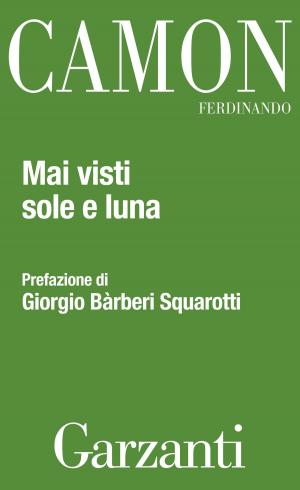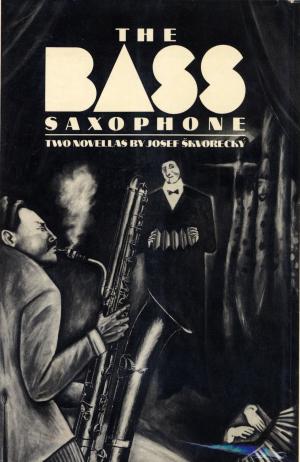I Manifesti del Futurismo (Italian Edition)
Nonfiction, Reference & Language, Foreign Languages, Italian, Fiction & Literature, Classics, Literary| Author: | Filippo Tommaso Marinetti | ISBN: | 9788892532205 |
| Publisher: | Filippo Tommaso Marinetti | Publication: | December 22, 2015 |
| Imprint: | Language: | English |
| Author: | Filippo Tommaso Marinetti |
| ISBN: | 9788892532205 |
| Publisher: | Filippo Tommaso Marinetti |
| Publication: | December 22, 2015 |
| Imprint: | |
| Language: | English |
Il Manifesto del futurismo (vedi testo) fu scritto da Filippo Tommaso Marinetti e pubblicato in forma di declamatoria per fornire una raccolta concisa di pensieri, convinzioni e intenzioni dei Futuristi il 5 febbraio 1909.
Il Futurismo è un grande movimento antifilosofico e anticulturale di idee, intuiti istinti pugni calci schiaffi specchiatori purificatori innovatori e velocizzatori creato il 20 febbraio 1909 da un gruppo di poeti arditi italiani geniali.
Fra le tante definizioni io prediligo quella data dai teosofi: «I Futuristi sono i mistici dell'azione». Infatti i Futuristi hanno combattuto e combattono il passatismo sedentario sotto tutte le forme: prudenza diplomatica, logica pessimistica, neutralismo, tradizionalismo, culto del libro, biblioteche, musei ...
I Futuristi hanno adorato e adorano la vita nella sua colorata e tumultuosa varietà illogica e la sua bellezza muscolare e folle. Armati di coraggio temerario e innamorati di ogni pericolo, essi arricchirono l’arte e la sensibilità artistica col succo e con le vibrazioni di una vita impavidamente osata, vissuta, voluta. Creare vivendo, talvolta contaminando, affermare, lanciarsi, battersi, resistere, riattaccare, lanciarsi di nuovo, indietreggiare mai, marciare non marcire.
--//--//--//--
The Manifesto of Futurism, Italian: Manifesto del Futurismo, written by the Italian poet Filippo Tommaso Marinetti, initiated an artistic philosophy, Futurism, that was a rejection of the past, and a celebration of speed, machinery, violence, youth and industry; it also advocated the modernization and cultural rejuvenation of Italy.
This manifesto was published well before the occurrence of any of the 20th Century events which are commonly suggested as a potential meaning of this text. Many of them could not even be imagined yet. For example, the Russian Revolutions of 1917 were the first of the sort "described" by article 11, yet the first of those occurred eight years after the Manifesto's publication.
The effect of the manifesto is even more evident in the Italian version. Not one of the words used is casual; if not the precise form, at least the roots of these words recall those more frequently used during the Middle Ages, particularly during the Rinascimento.
The founding manifesto did not contain a positive artistic programme, which the Futurists attempted to create in their subsequent Technical Manifesto of Futurist Painting (1914). This committed them to a "universal dynamism", which was to be directly represented in painting. Objects in reality were not separate from one another or from their surroundings: "The sixteen people around you in a rolling motor bus are in turn and at the same time one, ten four three; they are motionless and they change places... The motor bus rushes into the houses which it passes, and in their turn the houses throw themselves upon the motor bus and are blended with it."
Il Manifesto del futurismo (vedi testo) fu scritto da Filippo Tommaso Marinetti e pubblicato in forma di declamatoria per fornire una raccolta concisa di pensieri, convinzioni e intenzioni dei Futuristi il 5 febbraio 1909.
Il Futurismo è un grande movimento antifilosofico e anticulturale di idee, intuiti istinti pugni calci schiaffi specchiatori purificatori innovatori e velocizzatori creato il 20 febbraio 1909 da un gruppo di poeti arditi italiani geniali.
Fra le tante definizioni io prediligo quella data dai teosofi: «I Futuristi sono i mistici dell'azione». Infatti i Futuristi hanno combattuto e combattono il passatismo sedentario sotto tutte le forme: prudenza diplomatica, logica pessimistica, neutralismo, tradizionalismo, culto del libro, biblioteche, musei ...
I Futuristi hanno adorato e adorano la vita nella sua colorata e tumultuosa varietà illogica e la sua bellezza muscolare e folle. Armati di coraggio temerario e innamorati di ogni pericolo, essi arricchirono l’arte e la sensibilità artistica col succo e con le vibrazioni di una vita impavidamente osata, vissuta, voluta. Creare vivendo, talvolta contaminando, affermare, lanciarsi, battersi, resistere, riattaccare, lanciarsi di nuovo, indietreggiare mai, marciare non marcire.
--//--//--//--
The Manifesto of Futurism, Italian: Manifesto del Futurismo, written by the Italian poet Filippo Tommaso Marinetti, initiated an artistic philosophy, Futurism, that was a rejection of the past, and a celebration of speed, machinery, violence, youth and industry; it also advocated the modernization and cultural rejuvenation of Italy.
This manifesto was published well before the occurrence of any of the 20th Century events which are commonly suggested as a potential meaning of this text. Many of them could not even be imagined yet. For example, the Russian Revolutions of 1917 were the first of the sort "described" by article 11, yet the first of those occurred eight years after the Manifesto's publication.
The effect of the manifesto is even more evident in the Italian version. Not one of the words used is casual; if not the precise form, at least the roots of these words recall those more frequently used during the Middle Ages, particularly during the Rinascimento.
The founding manifesto did not contain a positive artistic programme, which the Futurists attempted to create in their subsequent Technical Manifesto of Futurist Painting (1914). This committed them to a "universal dynamism", which was to be directly represented in painting. Objects in reality were not separate from one another or from their surroundings: "The sixteen people around you in a rolling motor bus are in turn and at the same time one, ten four three; they are motionless and they change places... The motor bus rushes into the houses which it passes, and in their turn the houses throw themselves upon the motor bus and are blended with it."















